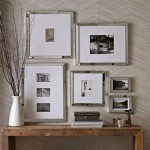Building a DIY Mirror Cube Table: A Step-by-Step Guide
A mirror cube table is a captivating and modern piece of furniture that can transform the look of any room. Its reflective surfaces create a mesmerizing illusion of space and light, making it a standout feature in any setting. While it may seem intimidating, building a DIY mirror cube table is achievable even for those without extensive woodworking experience. This article will guide you through the process, providing clear instructions and useful tips to help you create this stunning piece of furniture.
Essential Materials and Tools
Before embarking on this project, ensure you have the necessary materials and tools. Assembling a mirror cube table requires careful consideration of the materials and their properties. The following list provides a comprehensive overview of the essential components:
- Mirror Tiles (6): Choose high-quality mirror tiles that are durable and scratch-resistant. The size of the tiles will determine the dimensions of your cube table.
- Wood Frame (6): The frame provides the structural support for the mirror tiles. Select wood that is robust, such as oak or maple, and cut it to the desired dimensions. The size of the frame will also determine the dimensions of your cube table.
- Wood Glue: Use a strong wood glue formulated for bonding wood and mirror surfaces.
- Screws: Use screws that are long enough to secure the frame pieces together and attach the mirror tiles.
- Silicone Sealant: A clear silicone sealant will help prevent moisture damage and ensure a smooth finish.
- Measuring Tape, Level, and Pencil: These tools are essential for precise measurements, accurate leveling, and marking.
- Circular Saw or Jigsaw: These tools are used to cut the wood frame to size.
- Drill: A drill makes it easier to create pilot holes for screwing the frame together and attaching the mirror tiles.
- Clamps: Use clamps to secure the frame pieces while the glue dries.
- Safety Glasses and Gloves: Safety first! Wear safety glasses and gloves when working with tools and handling glass.
Building the Cube Frame
The first step is to construct the frame that will hold the mirror tiles. This step requires precision and careful measurements to ensure a stable and symmetrical structure. The following steps provide a detailed guide:
- Cut the Wood: Measure and cut the wood to the desired dimensions for each side of the cube. Remember to account for the thickness of the wood when determining the overall size of the table.
- Assemble the Frame: Apply wood glue to the edges of the wood pieces and join them together to form the cube shape. Clamp the pieces securely to allow the glue to dry completely.
- Secure with Screws: Once the glue has dried, reinforce the joints by drilling pilot holes and screwing the pieces together. Ensure the screws are long enough to pass through both pieces of wood but not too long to protrude through the surface.
Attaching the Mirror Tiles
With the frame complete, it's time to attach the mirror tiles. This step requires careful alignment and attention to detail to ensure a seamless and polished finish. The following steps outline the process:
- Prepare the Tiles: Clean the mirror tiles thoroughly with a glass cleaner and a microfiber cloth.
- Align and Secure: Position the mirror tiles on the frame, ensuring they are aligned and flush with the edges. Use a level to ensure that the tiles are perfectly aligned.
- Apply Silicone Sealant: Apply a bead of clear silicone sealant around the perimeter of each mirror tile. This will help prevent moisture damage and create a smooth finish.
- Attach with Screws: Once the silicone sealant has dried, attach the mirror tiles to the frame using screws. Drill pilot holes to prevent the mirror from cracking.
Finishing Touches
Once the mirror tiles are attached, the final step is to add finishing touches to your DIY mirror cube table. This includes cleaning up any excess sealant and adding protective features to enhance its longevity. The following steps provide guidance for this final stage:
- Clean Up the Sealant: Once the silicone sealant has dried, clean up any excess sealant with a damp cloth. Use a razor blade to remove any hardened sealant that may have seeped onto the mirror surface.
- Apply a Protective Coating: Apply a protective coating to the mirror tiles to prevent scratches and damage. Choose a clear, water-based sealant specifically designed for glass surfaces.
- Polish and Shine: Once the protective coating has dried, polish the mirror tiles with a microfiber cloth to achieve a gleaming finish.
Remember to exercise caution when handling glass and sharp tools. Follow the manufacturer's instructions for the glue, sealant, and protective coating. With careful planning, meticulous execution, and a dash of creativity, you can create a stunning DIY mirror cube table that will become a treasured piece of furniture in your home.

Diy Mirror Cube And Affordable

A Mirrored Side Table Is The Secret To Modernizing Your Thrift Decor Architectural Digest

A Mirrored Side Table Is The Secret To Modernizing Your Thrift Decor Architectural Digest

Diy Mirror Cube Designoform Decor Mirrored Furniture Bedroom

Diy Pro Geneva Vanderzeil Transforms An Old Cabinet Into Elegant Mirrored End Table Daily Mail

Mirrored Cube Side Table

A Mirrored Side Table Is The Secret To Modernizing Your Thrift Decor Architectural Digest

Urban Outfitters Mirrored Cube Side Table Mirror Coffee

Diy Mirror Cube And Affordable

I A Diy Design And Form








